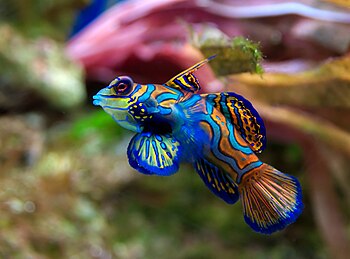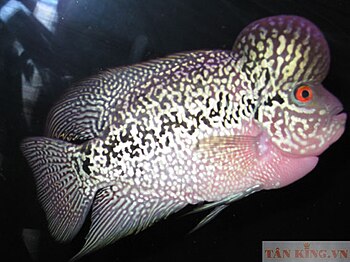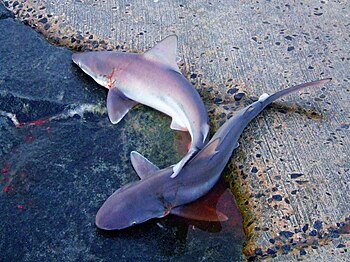Guppies are perhaps the most popular type of freshwater fish to keep in an aquarium. Luckily, they are fairly easy to keep as well. Guppies are hardy fish that can adjust easily to minor fluctuations in water quality. However, don't allow these fluctuations to become common practice, as they do cause some stress to the fish. The water temperature in an aquarium for guppies should be kept between seventy two and eighty two degrees. The P.H. level should be kept between 7.0 and 8.2. As you can see these specifications are much more forgiving than those for certain tropical or marine fish.
Guppies mature quickly and usually only grow to be about one and a half to two inches long. There small bodies and feathery fan like tails add a lot of interest to the tank. They are just fun to watch.
 |
| English: Pregnant guppy at about 26 days, named Betta, in author's aquarium (Photo credit: Wikipedia) |
As with any type of aquarium, there are three basic components to caring for the fish. Diet is very important. Guppies should be fed very small amounts as often as three times a day. Guppies will eat just about anything, but their main diet should consist of frozen or flake foods. This should be especially regarded when there are baby guppies in the tank, because guppies will eat their young. The next most important feature to caring for any fish is appropriate water regulation. The specific temperatures are listed above, but it is also important to make frequent water changes. Usually every one to two weeks, depending on need. If the water starts to smell or become cloudy, this is a good indication that it is time to change the water. If water changes are made gradually, meaning change approximately one third of the tank at a time, then there is little disruption made to the fish.
Last on the list for keeping fish healthy, is to keep them happy. Try to recreate their natural environment. It is recommended to keep a variety of plants in the aquarium for guppies to seek refuge. There should be about one to two inches of substrate in the bottom of the tank. Colored rock or dead crushed coral make a nice addition to the aquarium, and may help to make the fish feel more at home.
A few varieties of guppies are the Fantail, Flagtail, Spadetail, Deltatail and the Roundtail. The names of all of these different types of guppies focus on the tails because they are so remarkable and unique. The tail itself is usually about one third of the size of the whole fish. It is possible to mix guppies with other varieties of fish. However be careful when mixing because, guppies are targeted as easy prey due to those fancy tails. Guppies breed very quickly, usually about every three to four weeks. They will interbreed amongst themselves, so the aquarium could very quickly become filled with many different varieties of color. It is very feasible to have an attractive aquarium without having any other fish at all. If you don't want the species to interbreed, simply keep them in separate tanks.







